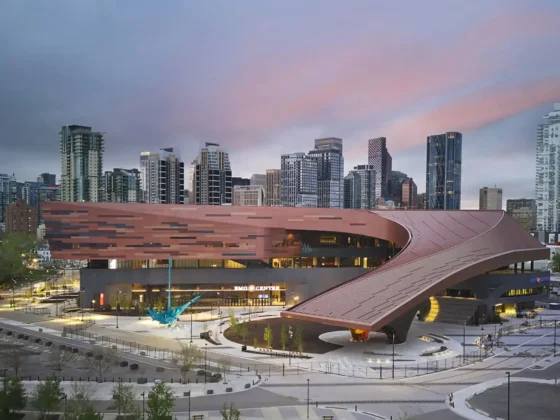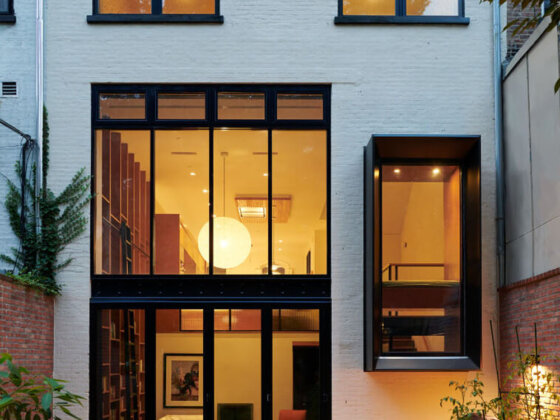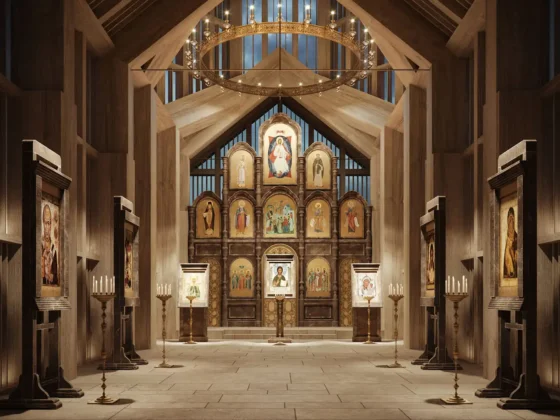Kaohsiung, Taiwan
The 225-meter long and nearly 160-meter wide building of The National Kaohsiung Centre for the Arts (Wei-Wu-Ying) created by Mecanoo, features four formal performance halls and a large outdoor amphitheater. Hosting a total of 6,000 seats and the most technologically advanced theatre facilities, the new cultural complex is fit for world-class performing artists and theatre companies.
The project was awarded with a 2020 International Architecture Award from The European Centre for Architecture Art Design and Urban Studies and The Chicago Athenaeum.
The National Kaohsiung Centre for the Arts is an icon that symbolizes the transformation of Kaohsiung, once a major international harbor, into a modern, diverse city with a rich cultural climate.
The project site was initially a fenced-off zone with empty barracks, barking dogs, and banyan trees.
These trees became an important source of inspiration for the architects’ design.
Their aerial shoots grow into the soil forming additional trunks, spreading over a wide area—their crowns inter-twine form one large protective canopy.
Similarly, the four formal performance halls are like trunks that extend to form one continuous undulating roof, sheltering a vast, open public space: Banyan Plaza.
Designed with the subtropical climate in mind, the open plaza catches the cool ocean breeze and offers protection from the sun and rain.
The passage from the air-conditioned theatres through the foyers to Banyan Plaza, to the surrounding park and finally to the hot, bustling city becomes a gradual, natural experience.
The Plaza’s sloping floor is designed as a continuation of the park’s landscape, gradually rising from ground level to a height of five meters. An open-air theatre nestles on the roof, where the structure curves to the ground, with the surrounding park forming the stage.
The challenge of constructing Banyan Plaza’s double-curved skin was addressed by collaborating with Dutch and local shipbuilding industries.

The surface is detailed using cold-bent prefabricated steel plates.
With the dimensions of a large ocean liner, the Centre for the Arts really does look and feel like a ship on land, but one in which the waves are not outside but part of the vessel.
The skin has the character of a cargo ship rather than a luxury yacht, with visible welding joints, integrating hoist points for hanging lights, flags, and banners.
It is made to be used: for practicing Tai Chi, staging street performances, or watching a film projected onto the Plaza’s continuous white surface.
Each venue is a world-class performance space and has its own identity, layout, acoustics, and ambiance.
The 1,981-seat Concert Hall has a stepped vineyard arrangement with the stage at its center, so that the performance can be viewed from all sides.
The intimate 434-seat Recital Hall, designed for chamber music and recitals, features sound-absorbing curtains that can tune the space to specific types of performances.
Flexibility is the core quality of the 1,210-seat Playhouse, which can be easily changed from a proscenium stage with the audience in front to a thrust stage with the audience on all three sides, making it also suitable for Chinese opera.
The 2,236-seat Opera House is arranged in the form of a horseshoe with three circled balconies. This theatre is suitable for Western opera, with an orchestra of over seventy musicians.
Program: Theatre complex of 141,000 sqm in the Wei-Wu-Ying Metropolitan Park with a total capacity of 5,861 seats: Concert Hall 1,981 seats, Opera House 2,236 seats, Playhouse 1,210 seats, Recital Hall 434 seats, exhibition space of 800 sqm, 1,000 sqm of rehearsal/education halls for music and dance, 2 conference halls with 100 and 200 seats and stage building workshops.
Project: National Kaohsiung Centre for the Arts (Wei-Wu-Ying)
Architects: Mecanoo
Local Architects: Archasia Design Group
Client: Preparatory Office of The Wei-Wu-Ying Center for the Arts of the Ministry of Culture, Taiwan
General Contractor: Chien Kuo Construction
Photographer: Iwan Baan














